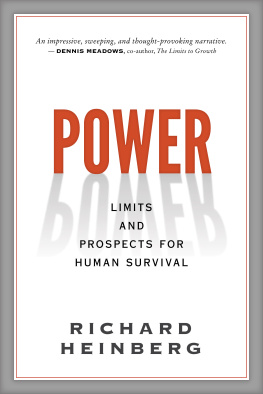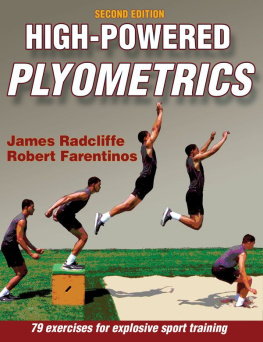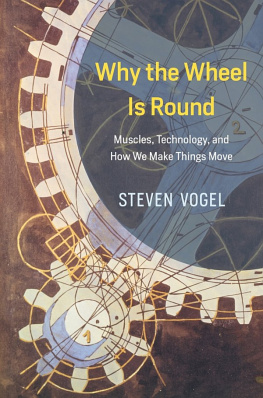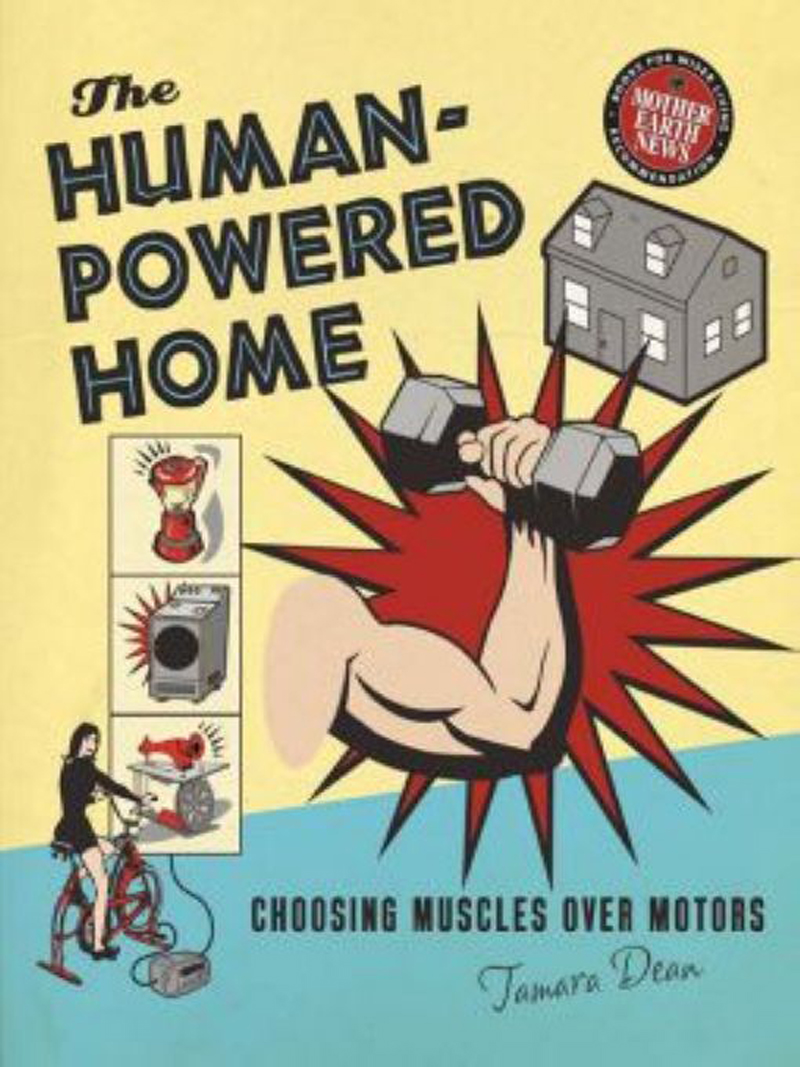Table of Contents
Advance Praise for The Human-Powered Home
This is a visionary book! For anyone looking for ideas to transition to a future less dependent on fossil fuels, The Human-Powered Home is a rich source of inspiration. With meticulous research, humor, and encouragement, Tamara Dean empowers readers with information, resources, and tools to create human-powered appropriate technology in their lives. Everyone Ive shown the book to has loved it!
SANDOR ELLIX KATZ, author of Wild Fermentation: The Flavor, Nutrition, andCraft of Live-Culture Foods and The Revolution Will Not Be Microwaved:Inside Americas Underground Food Movements
The Human-Powered Home is full of stuff you havent come across before and that may come in handy in a future when plug it in may not always be a viable strategy. We do have all these limbs and muscles its kind of a relief to be reminded how much they can accomplish.
BILL MCKIBBEN, author of Deep Economy
Lively and informative, The Human Powered Home made me want to go out and pedal my own blender.
ELIZABETH KOLBERT, staff writer, New Yorker and author of Field Notes from a Catastrophe: Man, Nature, and Climate Change
I got great enjoyment from Tamara Deans book. It covers the entire spectrum of human power from its history, its inventors, to plans for making devices. It celebrates self-sufficiency and human ingenuity, and is an inspiration to anyone trying to cut down on the use of earths more precious resources.
TREVOR BAYLIS, inventor of the clockwork radio and flashlight, founder of Baylis Brands plc.
ACKNOWLEDGMENTS
Thanks to:
Jonathan Teller-Elsberg, for his wonderful ideas, including the books title, and his unflagging enthusiasm; without him, this book would not exist.
B.C. Brown and Ann Shaffer, for friendly consultation from the start.
Judy Wilmes, for help with procurement.
Nick Reitenour, for his talent and patience in transforming my sketches and photos into illustrations.
David Gordon Wilson, who set the bar for improved human-powered devices a generation ago and who has inspired me and so many of the inventors featured in this book.
The following human-power enthusiasts, for generously sharing their inventions, expertise, and photos: Richard Andrews, Dave As-kins, George Austin, Roxana Baechle, Kevin Blake, Jock Brandis, Frederick Breeden, Carrie Brown, Ray Browning, Colin Bulthaup, David Butcher, Nate Byerley, Bill Carter, Scott Cooper, Graham Corbett, Frank Daller, Max Davis, Ali Dwyer, Job Ebenezer, Richard Ehrlich, Alex Gadsden, Bill Gerosa, Steven Gray, Albert Hartman, Laurie Hoffmann, Eric Hollenbeck, Rick Hutcheson, Gwyn Jones, Colin Kerr, Sheila Kerr, Roy Kornbluh, Anne Kusilek, Jennie Lane, Dave Miller, Jim Miller, Jason Moore, Ingrid Niehaus, Bart Orlando, Raj Pandian, Woody Roy Parker, Larry Pizzi, Ben Polito, Lee Ravenscroft, Jeff Rose, Michael Sacco, Shelley Salsburey, Steve Schmeck, Larry Shannon, Amy Smith, Henry Sodano, David Sowerwine, Jim Sylivant, Victoria Tai, David Temple, Marissa Valdez, Mike Viney, Ken Weimar, Alex Weir, Dick Wightman, and Rory Woods.
The kind staff at museums, libraries, newspapers, universities, and companies who helped with research and obtaining images to reprint in the book.
Carol Rawleigh, for her close and thoughtful editing.
Chris Plant and Ingrid Witvoet at New Society Publishers, who immediately embraced the project and shepherded it through publication.
EJ Hurst and Ginny Miller, for their dedicated publicity and marketing efforts; Sue Custance, for managing the books production and cover design; Greg Green, for his excellent work with the layout and figures; and others at New Society Publishers who collaborated in bringing the book to the world.
Deepest gratitude to my partner David, whose contributions are reflected throughout this book, for tinkering, instigating, encouraging and occasionally, providing the human power.
FOREWORD
by David Gordon Wilson
As I write this draft in April 2008 it seems that Tamara Deans book is an exact fit for the time. Global warming has become accepted as a highly probable consequence of human interference with the Earths systems; the prices of oil and gasoline have never been higher; obesity has been recognized as a serious health threat across the first world; and we have failed to improve the poverty, malnutrition and access to good water of most of the third world. The proposals, the reviews of successful and failed developments, and comments in this book can make positive contributions in all these areas.
To bring about change in such difficult fields seems like a fantasy. Yet Tamara Deans book could be another Silent Spring. People do change. When I first came to the US in 1955 race relations were appalling and seemingly could not be improved. The situation in 2008 is not perfect, but conditions have undergone a massive transformation. Also in those days just about everyone smoked. I tried to get some rights for nonsmokers at MIT and elsewhere, and my friends said Give it up, Dave! Look around everyone wants to smoke! And they were right: students and faculty smoked in class, and doctors smoked even when with their patients. Rather suddenly, the US changed abruptly from being a country where our freedoms included freedom to smoke almost anywhere to one having just about the most restrictive policies on smoking in the world. The major changes in these two different areas buoy me up when I contemplate seemingly intractable problems involving peoples behavior, expectations and deeply held beliefs about their rights. If the problems are explained honestly and directly, even the most hide-bound of us can change.
Tamara Dean wants to bring about changes in the way we use the energy of our muscles, and I am with her all the way. As an engineer I am embarrassed by the way we abandoned the development of human-powered tools and other devices as soon as the electric motor and internal-combustion engine came along. It annoys me that when I rake leaves or clip my hedge I am using far less power than my body could comfortably produce, but I am forced to use very old forms of shears and lawn rakes that constrain my output to being a small fraction of what my neighbors can produce with electric shears and powered leaf gatherers. I know that it doesnt have to be that way: I have made a human-powered plough with which I can clear our driveway of snow in much less time than our neighbors take with their gasoline-powered snowblowers. I have been challenging generations of MIT students to produce better human-powered lawnmowers and brush-shredders and the like, and some have produced delightful devices. But as Tamara Dean shows, creating better systems is not trivial. Our fossil-energy-powered competition has evolved over many decades of successive improvements, during which time human-powered devices have languished.
Therefore please read this book with high ambitions and expectations to bring about changes in our lives and in those of others, so that we can look forward to a future of greatly reduced adverse impacts on our environment, and of better health here and in places where impoverished people are presently scraping out a thin living. We could change the world!












